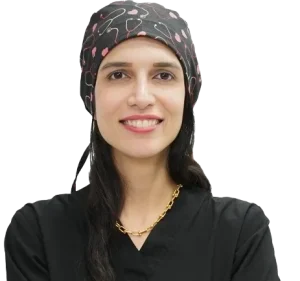What Is a Breast Implant and Why Is It Done?
Breast augmentation is a procedure that uses artificial implants to enhance breast volume or improve shape. It’s often recommended for women with naturally small breasts or those who have experienced sagging or volume loss after weight loss or pregnancy.
Types of Breast Implants: Silicone vs. Saline, Round vs. Teardrop
Breast implants typically come in two main types:
- Silicone: Filled with silicone gel, softer and more natural to the touch
- Saline: Filled with sterile saltwater solution, more adjustable
In terms of shape, implants can be:
- Round (for more fullness and projection)
- Teardrop (Anatomical) (more natural-looking, mimicking the natural breast shape)
Who Is a Good Candidate for Breast Implant Surgery?
Women who:
- Are dissatisfied with the current size or shape of their breasts
- Have lost volume due to pregnancy or weight loss
- Have asymmetric breasts
- Are in good general health and do not smoke
Pre-Surgery Preparation
During the consultation, your surgeon will recommend the size, shape, and type of implant that best suits your body’s anatomy. Prior to surgery, you will need to:
- Undergo general health tests
- Avoid certain medications and supplements
- Quit smoking at least two weeks before the procedure
How Is Breast Implant Surgery Performed?
The surgery is typically done under general anesthesia and takes about 1 to 2 hours. The surgeon makes incisions under the breast, around the areola, or in the armpit, and places the implant either beneath or above the chest muscle. The incision is then closed with sutures and dressed.
Post-Surgery Care and Recovery
Patients are usually discharged within 24 hours. Key post-operative care includes:
- Wearing a medical support bra for several weeks
- Avoiding heavy physical activity for 4 to 6 weeks
- Pain management with prescribed medication
- Follow-up visits to monitor healing progress
Longevity and Replacement Needs
Breast implants typically last between 10 to 15 years. In some cases, earlier replacement may be needed for medical or aesthetic reasons. Regular check-ups and consultations are essential.
Breast Implants, Breastfeeding, and Mammograms
Most implants do not interfere with breastfeeding. Mammograms are still possible with implants, but the technician must be informed of their presence.
Frequently Asked Questions
- Are breast implants permanent? No, they may require monitoring and potential replacement over time.
- Can breast implants rupture? Yes, though rare, they can rupture from significant trauma.
- Do breast implants cause cancer? According to scientific sources, no. (FDA source)
Comparison Table: Types of Breast Implants
| Type | Advantages | Disadvantages |
|---|---|---|
| Silicone | More natural appearance, soft texture | Requires periodic MRI checkups |
| Saline | Smaller incision, safely absorbed if ruptured | Feels firmer than silicone |
Fat Transfer or Breast Implants?
For individuals seeking a more natural enhancement, fat transfer to the breasts or face may be a suitable alternative, though results are generally more subtle.
Schedule a Specialist Consultation
To explore the best breast enhancement option tailored to your body, contact Dr. Bita Saghi’s Clinic. The initial consultation is free.
Free Expert Consultation on Breast Implants
Dr. Bita Saghi Advanced Skin, Hair & Aesthetic Clinic
+98-21-79527

